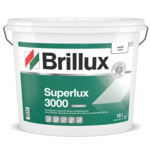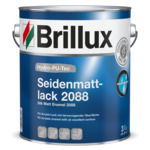Architecture sets a school apart
Photos: Ralf Heidenreich, Darmstadt
This article appeared in colore #bonbonrosa
Order the print version at: kontakt@brillux.de
It looks friendly now, welcoming and modern – the "Erbeskopf-Realschule plus Thalfang", carefully refurbished by the Loewer und Partner architectural firm, with a great deal of love, was completed in 2018. The building originally dated back to the 1970s. The inclusion of harmful building materials, a lack of fire protection and outdated spatial concepts, as well as its overall poor condition, meant that it urgently required renovation. In the redesign, the architects took inspiration from nature while using what was already there.
We enhanced the existing building with new surfaces ...
Janine Abou-Zahab, the design architect in charge

"A school has been created that inspires its students with the joy of learning, that has a structured spatial concept and that allows the students room to develop," explains Gerhard Dallendörfer, the project manager in charge of the renovation, from Loewer und Partner Architekten.
Keeping the old
To this end, the structure was initially reduced to the shell with the aim of retaining as much of the foundations and original structure as possible. In the end, the basic structure of the building remained largely unchanged, while two new external staircases, which serve as escape routes, complement the building in a restrained, yet striking manner. The new entrances echo the symmetry of the windows and parapets of the existing building, integrating into the overall concept. All exterior rooms have also been equipped with new doors, which serve as additional escape routes in the future. The washed concrete facades to be renovated had a range of fine and coarse textures. As part of the planned ETICS insulation work, these textures were interpreted with new render surfaces. The parapets were given an anthracite-colored, fine render, the frames and front sides were execute with coarse, 4 millimeter, bright render. "We reinforced the existing building with new surfaces, gave it new character," says Janine Abou-Zahab, the design architect in charge.
A new approach
Inside, new functions were assigned to the rooms: The ground floor now houses, among other things, the teaching kitchen and art and work rooms. In contrast, on the first floor, science and general classrooms provide the ideal environment for learning – equipped to the latest technical standards. The integrated, barrier-free elevator connects the ground floor to the first and second upper floor, and provides a vertical element in the otherwise more horizontally structured building. "For us, it’s always an exciting challenge to preserve the character that an existing building has developed over the years and to strengthen it by intervening deliberately." This means the large reliefs in the hall were kept, which once again serve as a design element and stand out much more clearly in the new overall context of the building.
Bringing an old building into bloom again is always an exciting challenge for us.
Gerhard Dallendörfer, Project Manager in charge at Loewer und Partner Architekten

Showing one's colors
In terms of color, the architects from Loewer und Partner worked around both the materials used and nature, so that exterior doors and windows were given a subtle gold coating. "In fall in particular, the leaves of the trees shimmer in yellowish golden tones while in summer, the fields shine with rich yellow – these color shades inspired us to choose gold anodized window elements, creating a bridge between architecture and nature," enthuses Gerhard Dallendörfer. Windows and doors are framed by a cool anthracite that contrasts with the otherwise white facade. In addition, not only the reliefs in the hall, but the bricks were renovated and preserved where possible. Their beige color can is echoed on the corridor walls on the upper floors. "As you walk through the school building, you meet the same beige tone repeatedly, and it only differs in terms of its material base."
 The newly designed entrance area welcomes the students with openness and a lot of light.
The newly designed entrance area welcomes the students with openness and a lot of light.
The color representation on the screen cannot be regarded as binding.
Providing orientation
The architects also designed a new color concept for the 24 classrooms/various workshops and specialist teaching rooms, that ensures improved organization and orientation. In addition to white and light gray, two different shades of blue and green were chosen, which can be found in classroom floor coverings and decorating the walls in the corridors. Each of these colors serves as an accent and is assigned to a class – this allows the students to better identify with their surroundings and to visually get a grip on their surroundings more quickly. The remaining walls were deliberately kept in white and light gray, to create a bright, clear and calming atmosphere. When the students were allowed to return to their old school after two and a half years of building work, they were very happy – and loved the new concept. The large lamps in particular prompted a great deal of enthusiasm. "Although the hall was already sufficiently illuminated, we also decided to use round pendant lamps to catch the eye. These luminous elements fill the air space and connect the floors."
Project data
- OBJECT | SITE Erbeskopf-Realschule plus, Thalfang
- OWNER | USER Verbandsgemeinde Thalfang am Erbeskopf, Thalfang
- ARCHITECT Loewer + Partner Architekten, Darmstadt
- TECHNICAL CONSULTANT Borris Gönner, Brillux Wiesbaden
- PAINTING CONTRACTORS Hahn & Weiß, Idar-Oberstein












